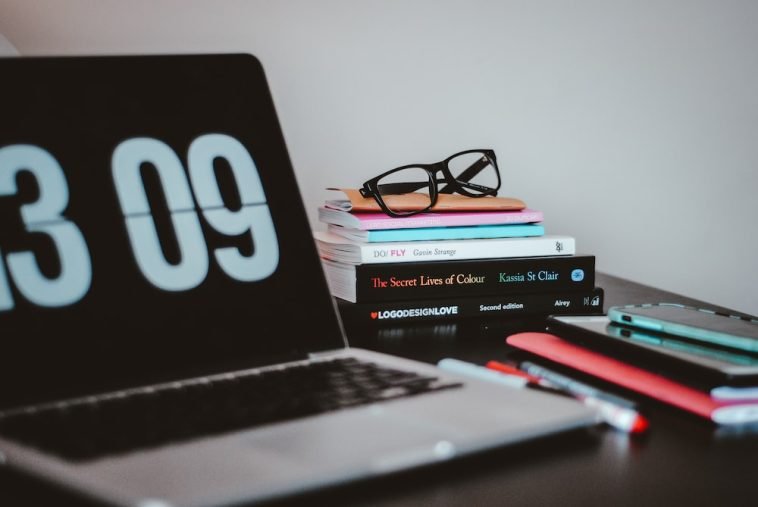Introduction.
If you’ve been thinking about freelancing and coding, you’re in the right place! Coding can open up doors to all sorts of exciting freelance opportunities. But it can also feel overwhelming when you’re just starting out.
The good news is, learning to code doesn’t have to be complicated or stressful, and it can be a lot of fun too. Whether you want to build websites, create apps, or dive into data analysis, coding skills are in high demand across the freelance world.
So, why is coding such a great skill for freelancing? Well, according to Statista, the global freelance workforce is growing fast. By 2027, it’s estimated that freelancers will make up more than 50% of the U.S. workforce.
That means there are tons of opportunities for freelancers with coding skills. Whether you’re looking to work part-time or full-time, learning to code can give you the flexibility and independence to design your own career.
In this guide, I’ll walk you through the steps you need to take to learn coding for freelancing. I’ll break down the key concepts, resources, and strategies that’ll help you get started and find success as a freelance coder.
So, let’s dive in and explore how you can learn coding and start earning!
Why Should You Learn Coding for Freelancing?
First, let’s talk about why coding is such a great skill to have for freelancing.
- High Demand: The demand for developers, designers, and data scientists is through the roof. According to Upwork’s 2023 Skills Index, tech jobs consistently rank among the top 10 most in-demand freelance skills. Whether it’s front-end or back-end development, businesses always need people who can bring their tech projects to life.
- Flexibility: Coding offers so much flexibility. You can work from anywhere, pick projects that excite you, and set your hours. Freelancing gives you the freedom to balance work and life on your terms.
- Good Pay: Freelance coders often make good money. Rates vary depending on experience and the kind of work you do, but you can easily earn anywhere from $20 to $150 per hour, depending on your skills. As you build a portfolio, your rate can increase significantly.
- Unlimited Opportunities: Once you have coding skills, you’ll have access to a wide range of job types. From building websites to automating business processes to working with big data, the possibilities are endless.
How Do I Learn Coding For Freelancing?
Step 1: Choose the Right Programming Language.
When you’re starting to learn coding for freelancing, one of the first things you’ll need to decide is which programming language to learn.
There are tons of options, but here’s a quick rundown of some of the most popular and in-demand languages for freelancers:
- HTML/CSS: These are the building blocks of web development. If you’re interested in building websites or web pages, learning HTML and CSS should be your starting point. These languages are relatively easy to learn and essential for any web development project.
- JavaScript: If you want to take your web development skills to the next level, JavaScript is a must-learn. It’s used to make websites interactive and is one of the most popular languages for both front-end and back-end development.
- Python: Python is a versatile language that’s great for data science, machine learning, web development, and automation. It’s known for being beginner-friendly and is in high demand in the freelance market.
- PHP: If you’re interested in back-end development, PHP is a solid option. It powers many popular content management systems (like WordPress), and it’s frequently used in web development.
- Ruby: Ruby on Rails is a powerful framework for web development, and it’s great if you want to work with startups and tech companies.
Step 2: Find the Right Learning Resources.
Once you’ve picked your language, it’s time to start learning. There are tons of resources available online, many of which are free or affordable. Here’s a mix of platforms and websites to help you get started:
- FreeCodeCamp: This is one of the most popular free platforms for learning coding. It offers interactive lessons in web development, JavaScript, Python, and more.
- Codecademy: Codecademy offers both free and paid courses in a variety of programming languages. Their interactive coding environment makes it easy to learn by doing.
- Udemy: Udemy is an online learning platform that has a huge selection of coding courses for beginners and experienced developers. You can usually find courses on sale for just $10-20.
- YouTube: There are countless free coding tutorials available on YouTube. Channels like “Traversy Media” and “The Net Ninja” offer high-quality videos on web development, JavaScript, and more.
- Books: Sometimes, old-school resources are the best. Books like “Eloquent JavaScript” (for JavaScript) and “Automate the Boring Stuff with Python” (for Python) are excellent for diving deep into coding concepts.
- Meetups & Communities: Learning to code can feel isolating at times, but there are plenty of communities you can join to stay motivated. Check out local meetups (many are virtual now), or join coding communities on Reddit, Stack Overflow, or Discord.
Step 3: Build Your Portfolio.
As you start learning, you’ll need to build a portfolio to showcase your skills. Freelancers without portfolios have a hard time attracting clients, so having a strong one is essential. Here’s how to build yours:
- Start Small: In the beginning, it’s okay to take on simple projects. Try building your own website, creating a small app, or redesigning a website for a friend. The goal is to get experience and create real work to show off.
- GitHub: GitHub is a platform where you can share your code with others. It’s like an online portfolio for your coding projects. When you’re ready, upload your work to GitHub to show potential clients how you write code and solve problems.
- Personal Projects: Clients want to see your work, so start working on projects that interest you. If you’re into gaming, try building a simple game. If you’re into blogging, create a blog platform. The more personal and passionate your projects are, the better!
- Freelance Platforms: Websites like Upwork, Fiverr, and Freelancer allow you to create profiles and start bidding on projects. Even if you’re new to freelancing, these platforms can help you find paying gigs and build your portfolio.
Step 4: Start Freelancing and Get Paid.
Once you feel confident in your coding skills and have a few projects in your portfolio, it’s time to start freelancing. Here’s what you can do:
- Find Clients: Use freelance platforms like Upwork, Freelancer, and Fiverr, or network with local businesses. You can also reach out to potential clients via social media or LinkedIn. Building a solid network is key to landing consistent gigs.
- Set Your Rates: Pricing can be tricky at first, but as you gain experience, you’ll get a sense of what to charge. For beginners, you might start at $20-$30 per hour. As you gain skills and reputation, you can raise your rates.
- Pitch Well: When applying for freelance jobs, write a clear, personalized pitch. Show how your skills match the client’s needs and explain why you’re the best fit for the job. Don’t forget to link to your portfolio!
- Stay Organized: Use tools like Trello, Asana, or Notion to keep track of your projects. Managing your time and tasks effectively will help you stay on top of deadlines and impress clients.
FAQs
1. How long does it take to learn coding for freelancing?
The time it takes to learn coding varies from person to person. On average, you can expect to spend anywhere from 3 to 6 months getting comfortable with coding if you’re learning it part-time. It’s all about consistency—so try to code a little bit every day.
2. Do I need a computer science degree to be a freelance coder?
Nope! Many successful freelance coders don’t have a formal degree. What matters most is having practical coding skills and a solid portfolio to show clients. You can learn coding online, and a degree isn’t required for most freelance projects.
3. Can I learn coding for freelancing without any prior experience?
Yes, absolutely! You don’t need any prior coding experience to get started. Many resources are designed for beginners and will take you step by step through the learning process.
4. How do I know if I’m ready to start freelancing?
You’ll know you’re ready when you have a few projects in your portfolio and feel confident in your coding abilities. Don’t worry if you’re not an expert yet—there are plenty of small freelance gigs you can start with to gain experience.
Conclusion.
Now that you’ve got a roadmap for how to learn coding for freelancing, it’s time to take action! Remember, the key is to start small, stay consistent, and keep building your skills.
Freelancing might seem intimidating at first, but with determination and the right approach, you can absolutely make it work.
The only question left is: Are you ready to dive into the world of freelance coding and start your own journey?





GIPHY App Key not set. Please check settings